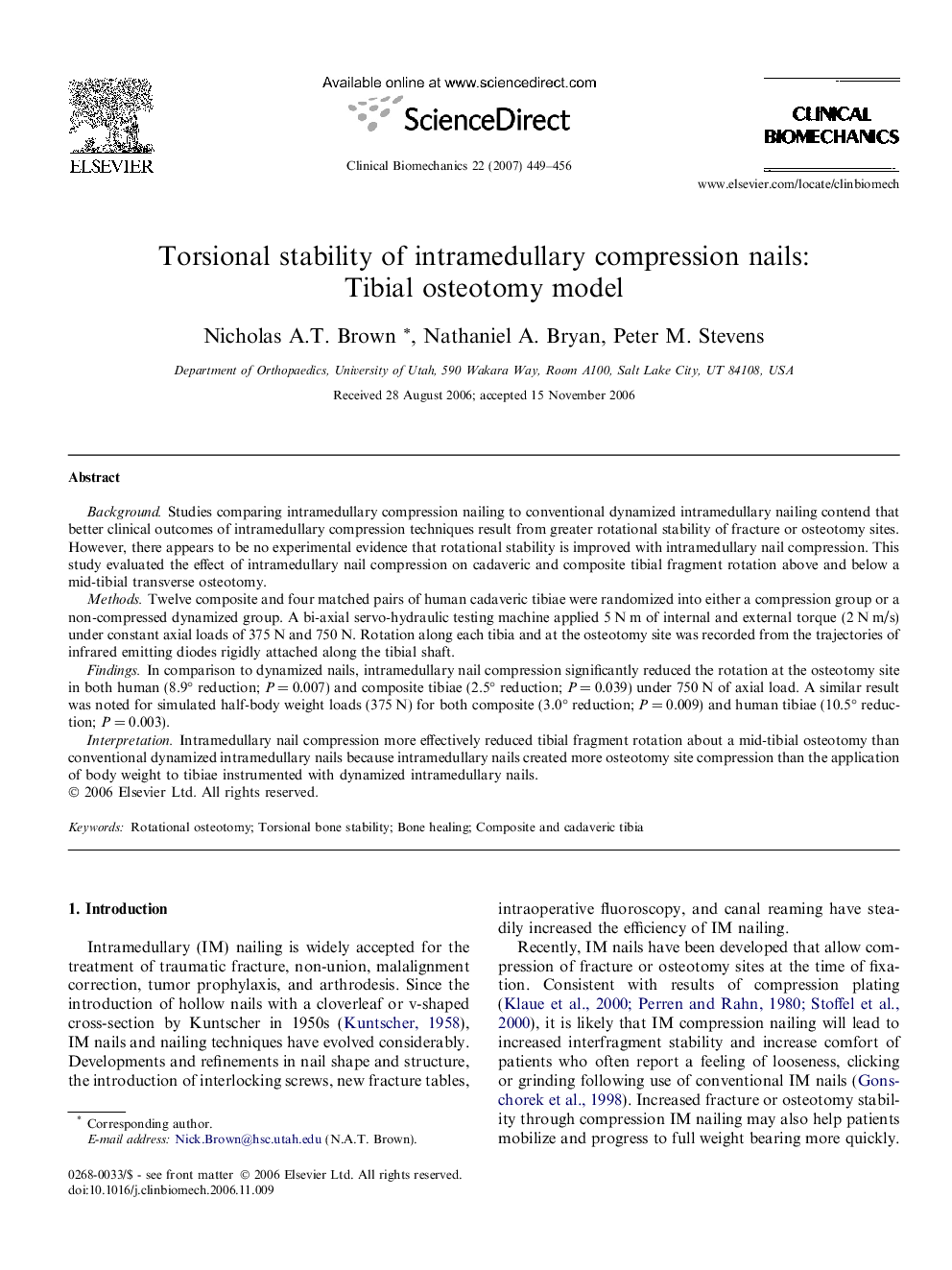| Article ID | Journal | Published Year | Pages | File Type |
|---|---|---|---|---|
| 4051301 | Clinical Biomechanics | 2007 | 8 Pages |
BackgroundStudies comparing intramedullary compression nailing to conventional dynamized intramedullary nailing contend that better clinical outcomes of intramedullary compression techniques result from greater rotational stability of fracture or osteotomy sites. However, there appears to be no experimental evidence that rotational stability is improved with intramedullary nail compression. This study evaluated the effect of intramedullary nail compression on cadaveric and composite tibial fragment rotation above and below a mid-tibial transverse osteotomy.MethodsTwelve composite and four matched pairs of human cadaveric tibiae were randomized into either a compression group or a non-compressed dynamized group. A bi-axial servo-hydraulic testing machine applied 5 N m of internal and external torque (2 N m/s) under constant axial loads of 375 N and 750 N. Rotation along each tibia and at the osteotomy site was recorded from the trajectories of infrared emitting diodes rigidly attached along the tibial shaft.FindingsIn comparison to dynamized nails, intramedullary nail compression significantly reduced the rotation at the osteotomy site in both human (8.9° reduction; P = 0.007) and composite tibiae (2.5° reduction; P = 0.039) under 750 N of axial load. A similar result was noted for simulated half-body weight loads (375 N) for both composite (3.0° reduction; P = 0.009) and human tibiae (10.5° reduction; P = 0.003).InterpretationIntramedullary nail compression more effectively reduced tibial fragment rotation about a mid-tibial osteotomy than conventional dynamized intramedullary nails because intramedullary nails created more osteotomy site compression than the application of body weight to tibiae instrumented with dynamized intramedullary nails.
